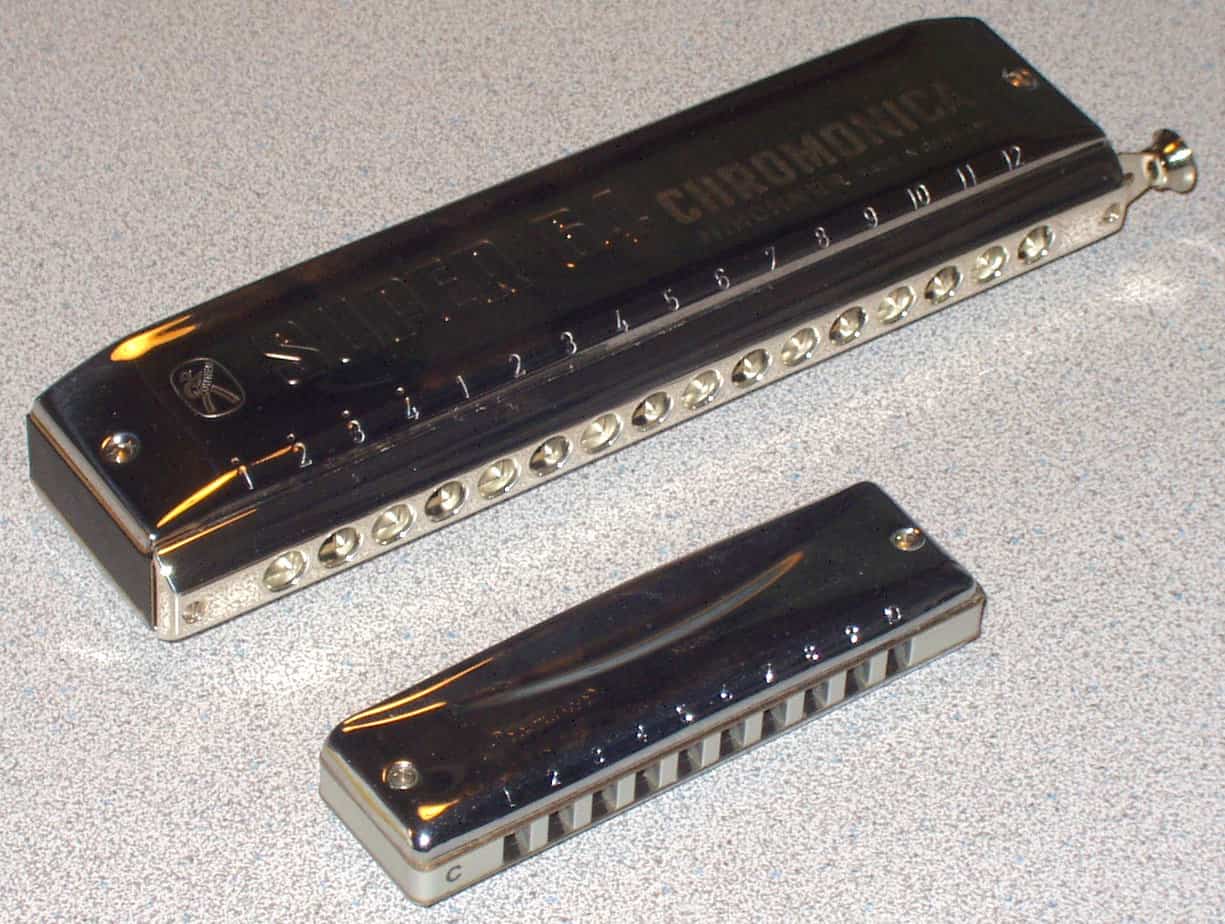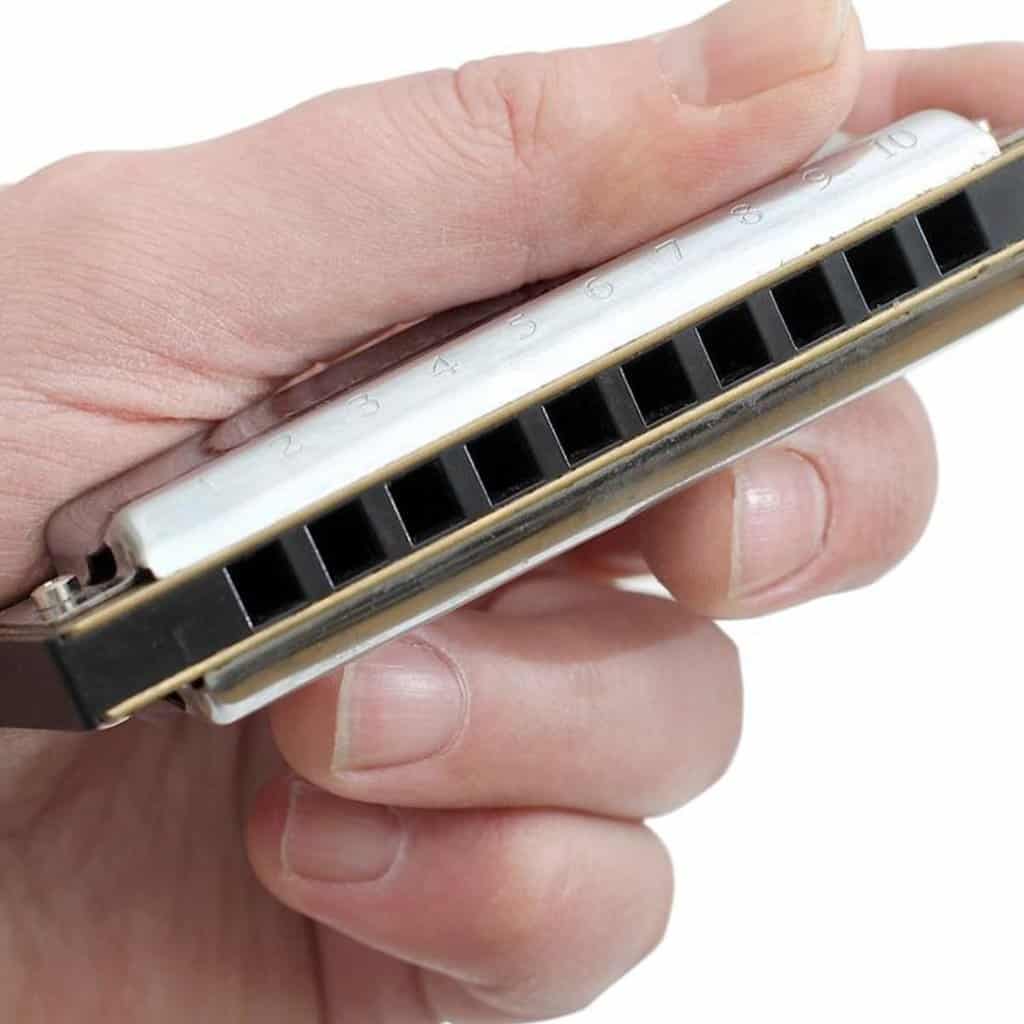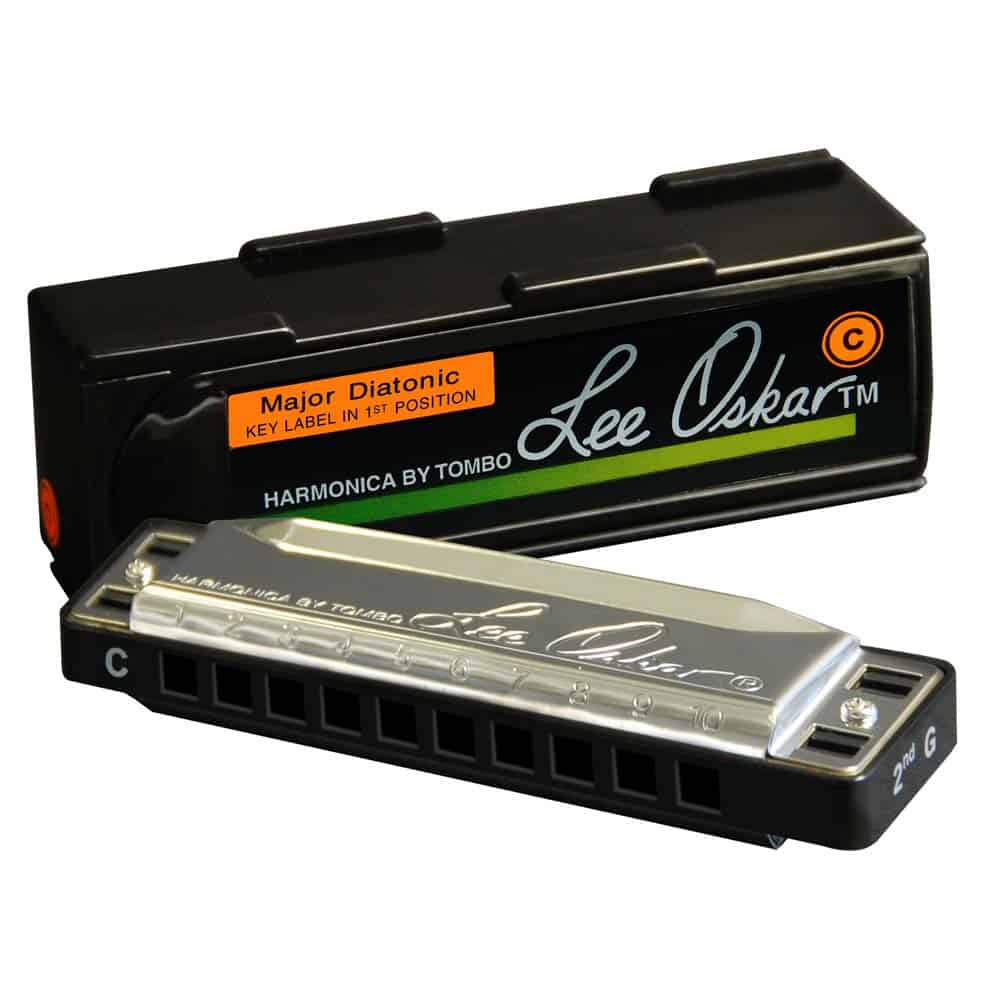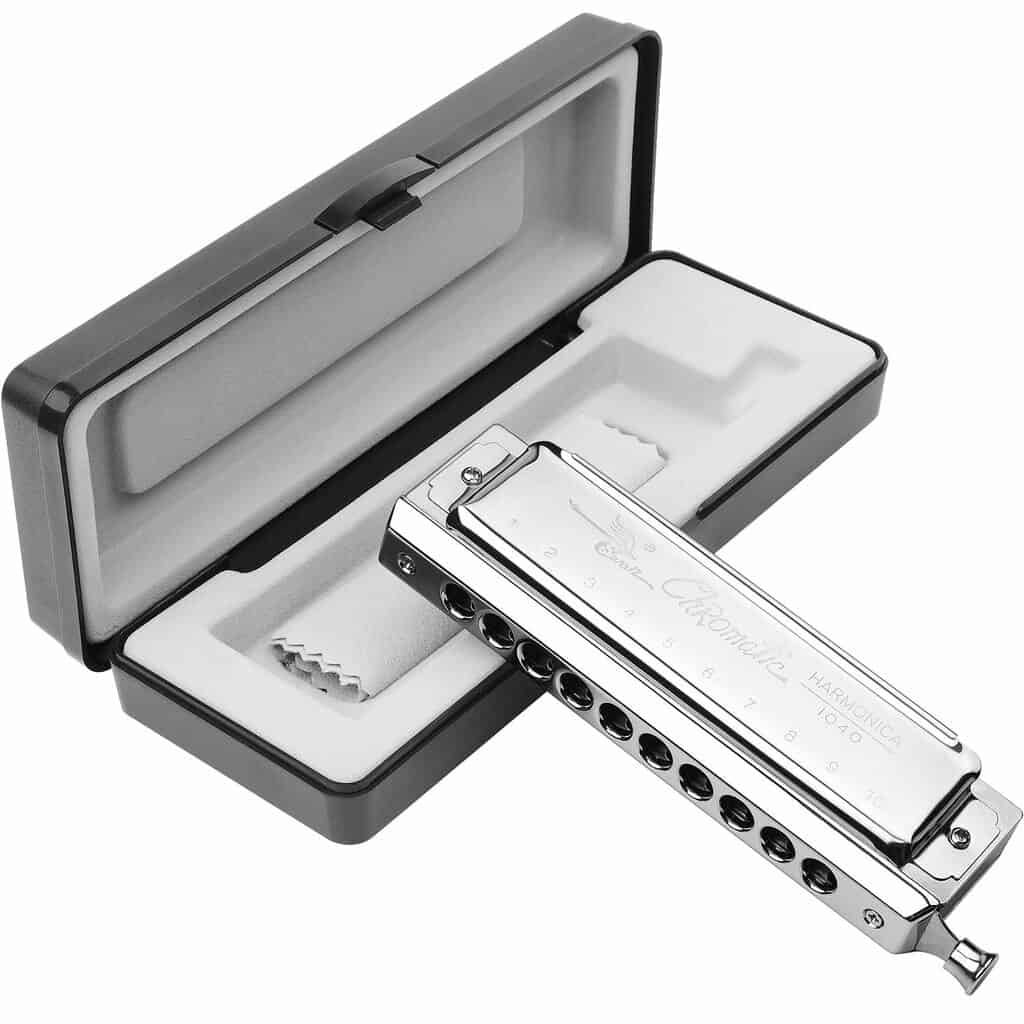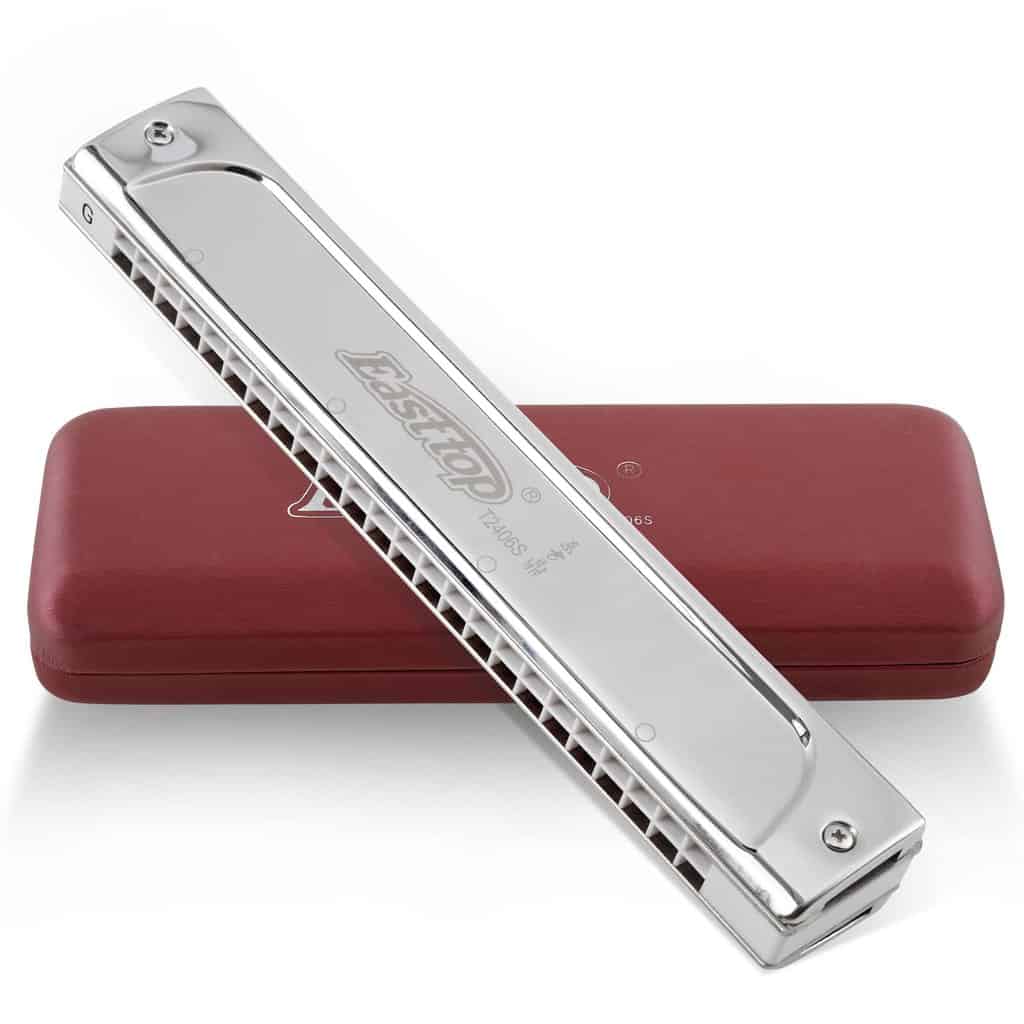The harmonica is a versatile and fascinating instrument that can add a unique sound to any genre of music. If you’re new to the harmonica, you might be wondering where to start. With so many different types and brands available, it can be overwhelming to know which one to choose. In this blog post, we’ll break down the different kinds of harmonicas and what to consider when choosing your first one.
What is a Harmonica?
A harmonica is a free reed wind instrument, consisting of a mouthpiece, a chamber containing reeds, and a sound chamber. When you blow into the mouthpiece, the air flows over the reeds, causing them to vibrate and produce sound. Harmonicas are often associated with blues and folk music, but they can be used in a variety of styles, from classical to pop to rock.
Different Types of Harmonicas
There are several types of harmonicas, each with its own unique sound and purpose. Here are some of the most common:
Diatonic Harmonicas
Diatonic harmonicas are the most common type and are often used in blues, folk, and pop music. They are designed to play in a single key and have 10 holes, with two reeds per hole (one for blowing and one for drawing). Diatonic harmonicas are great for beginners because they are relatively simple to use and can produce a wide range of sounds.
Chromatic Harmonicas
Chromatic harmonicas have a button on the side that redirects the airflow to the next row of reeds, allowing the player to play in any key. They have a more complex structure than diatonic harmonicas and are often used in jazz, classical, and pop music. Chromatic harmonicas are more challenging for beginners, but they offer more versatility and range.
Tremolo Harmonicas
Tremolo harmonicas have two reeds per hole, with one reed tuned slightly higher than the other. This creates a vibrato or tremolo effect, which can add a unique sound to your playing. Tremolo harmonicas are often used in folk and traditional music.
Semitone Harmonicas
Semitone harmonicas are similar to diatonic harmonicas, but they have an extra row of reeds that allows the player to play in a full chromatic scale. They are often used in blues and jazz music.
What to Consider When Choosing a Harmonica
When choosing your first harmonica, there are several factors to consider:
Ease of Use
As a beginner, you’ll want a harmonica that is easy to use and doesn’t require a lot of advanced techniques. Diatonic harmonicas are a great option for beginners because they are relatively simple to use and can produce a wide range of sounds.
Quality
The quality of the harmonica is also important. Look for a harmonica that is made with high-quality materials and has a good reputation. Some of the most well-known brands include Hohner, Lee Oskar, and Suzuki.
Price
Harmonicas can range in price from very affordable to quite expensive. As a beginner, you might want to start with a more affordable option and upgrade as you become more experienced. However, keep in mind that a higher-priced harmonica may offer better quality and durability.
Sound
The sound of the harmonica is also important. Different types of harmonicas have different sounds, so consider what kind of music you want to play and choose a harmonica that will produce the sound you’re looking for.
Getting Started with Your Harmonica
Once you’ve chosen your harmonica, it’s time to get started! Here are some tips for beginners:
Learn the Basics
Start by learning the basics of playing the harmonica, such as how to hold it, how to blow and draw, and how to play single notes. There are plenty of online tutorials and resources available to help you get started.
Practice Regularly
Like any instrument, practice is key to improving your skills. Set aside time each day to practice playing your harmonica, even if it’s just for a few minutes.
Experiment with Different Techniques
Once you’ve mastered the basics, start experimenting with different techniques, such as bending notes, using vibrato, and playing chords. These techniques can add depth and complexity to your playing.
Looking to start playing the harmonica but not sure where to begin? Check out our guides on how to choose a banjo, how to buy a harmonica, how to break in a harmonica, and how to set up a mandolin for all the tips and information you need to get started on your musical journey!
Conclusion
Choosing the right harmonica as a beginner can be a daunting task, but by considering factors such as ease of use, quality, price, and sound, you can find the perfect harmonica for your needs. Whether you’re drawn to the simplicity of diatonic harmonicas or the versatility of chromatic harmonicas, there’s a harmonica out there for everyone. With practice and dedication, you can learn to play this fascinating instrument and add a unique sound to your music.

